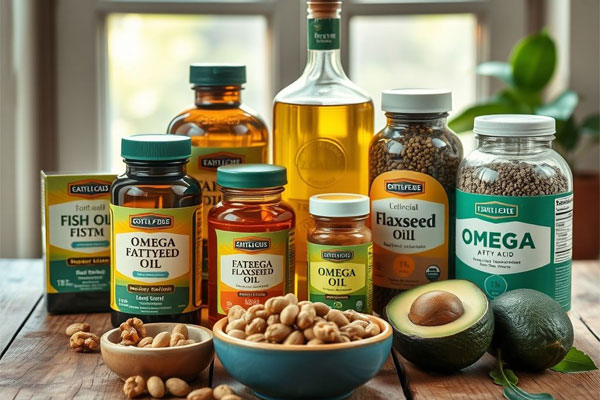Take a tour of any supermarket today, and you will be struck by the number of margarine tubs, cooking oils and even yogurts and eggs that have “Omega 3 or 6” either in their brand name or added in big letters to the packaging.
 What is the sudden big deal with Omegas? Are marketers just cashing in on new research evidence claims about these Omegas to sell their products already naturally rich in these fatty acids? Or are there real benefits from these fatty acids, and if so, what in particular for persons practicing sports?
What is the sudden big deal with Omegas? Are marketers just cashing in on new research evidence claims about these Omegas to sell their products already naturally rich in these fatty acids? Or are there real benefits from these fatty acids, and if so, what in particular for persons practicing sports?
What exactly are Omega fatty acids?
These are polyunsaturated fatty acids which are classified as essential nutrients because they cannot be synthesized in the body and must be obtained from food.
What is the difference between Omega 3 and 6?
Omega 3 :
• Slows synthesis of bad cholesterol,
• Lowers levels of triglycerides in the blood (high levels of triglycerides in the bloodstream have been linked to risks of heart disease and stroke),
• Omega 3’s facilitate mobility of the red blood cells and prevent stickiness in the capillaries,
• Prevents overdose of calcium to the heart muscles which can cause a heart attack, and lowers rate of death after a heart attack,
• Diminishes the deposits of fats in adipose tissue (fatty tissues).
Omega 6:
• Helps maintain cardiovascular equilibrium,
• Beneficial to the immune system
• Helps to heal allergic reactions .
Omega 3 & 6 both help towards a securing good functioning of the nervous and hormonal systems and in the regulation inflammation.
More about omega fatty acids:
- What is the best source and what is the correct dose?
- What are the benefits for sportsmen?
- Are there any side effects?
- Are they legal substances for athletes?
source Time-to-Run and Women’s Editor Cassandra Davis






























